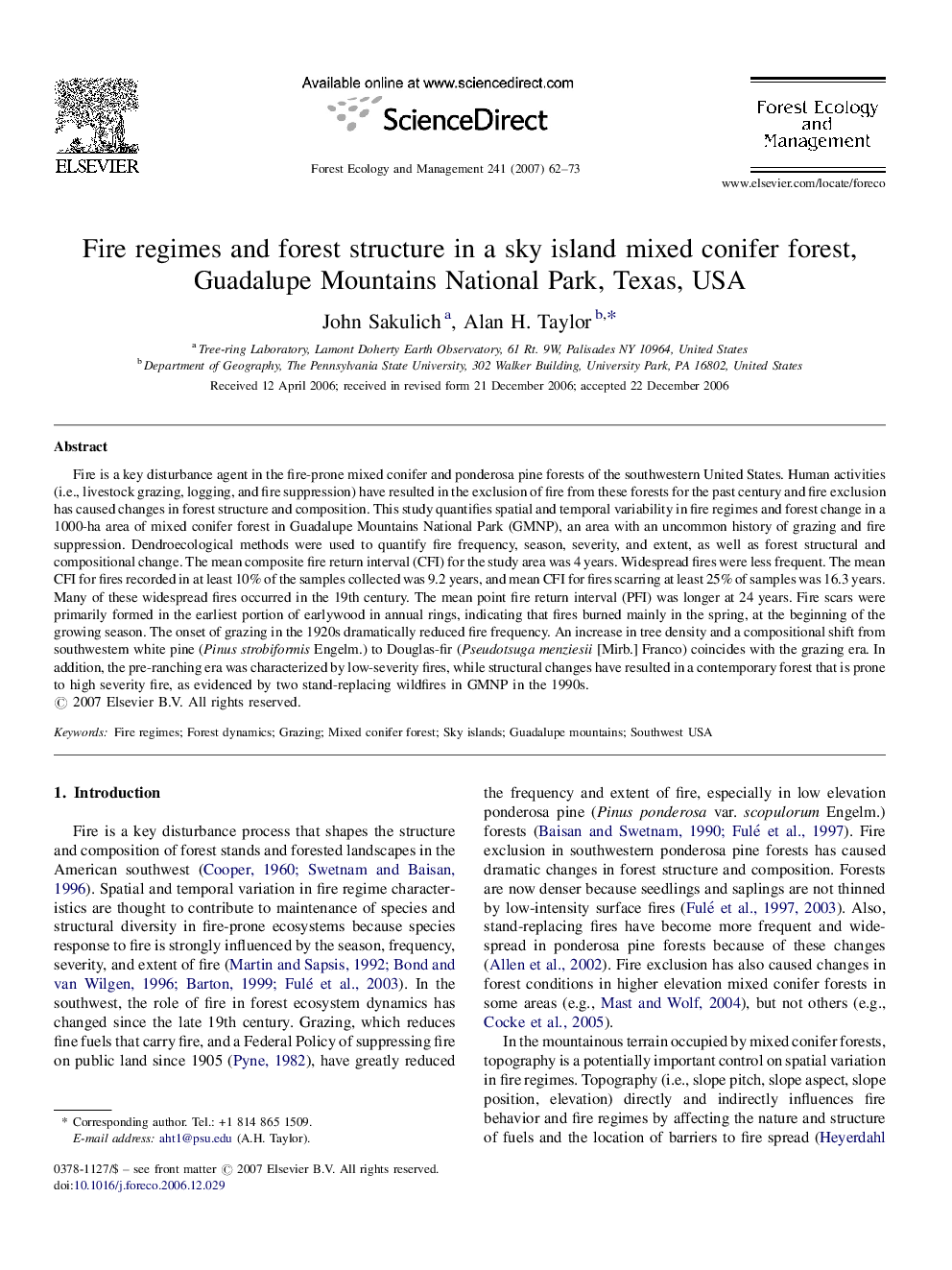| Article ID | Journal | Published Year | Pages | File Type |
|---|---|---|---|---|
| 90764 | Forest Ecology and Management | 2007 | 12 Pages |
Fire is a key disturbance agent in the fire-prone mixed conifer and ponderosa pine forests of the southwestern United States. Human activities (i.e., livestock grazing, logging, and fire suppression) have resulted in the exclusion of fire from these forests for the past century and fire exclusion has caused changes in forest structure and composition. This study quantifies spatial and temporal variability in fire regimes and forest change in a 1000-ha area of mixed conifer forest in Guadalupe Mountains National Park (GMNP), an area with an uncommon history of grazing and fire suppression. Dendroecological methods were used to quantify fire frequency, season, severity, and extent, as well as forest structural and compositional change. The mean composite fire return interval (CFI) for the study area was 4 years. Widespread fires were less frequent. The mean CFI for fires recorded in at least 10% of the samples collected was 9.2 years, and mean CFI for fires scarring at least 25% of samples was 16.3 years. Many of these widespread fires occurred in the 19th century. The mean point fire return interval (PFI) was longer at 24 years. Fire scars were primarily formed in the earliest portion of earlywood in annual rings, indicating that fires burned mainly in the spring, at the beginning of the growing season. The onset of grazing in the 1920s dramatically reduced fire frequency. An increase in tree density and a compositional shift from southwestern white pine (Pinus strobiformis Engelm.) to Douglas-fir (Pseudotsuga menziesii [Mirb.] Franco) coincides with the grazing era. In addition, the pre-ranching era was characterized by low-severity fires, while structural changes have resulted in a contemporary forest that is prone to high severity fire, as evidenced by two stand-replacing wildfires in GMNP in the 1990s.
